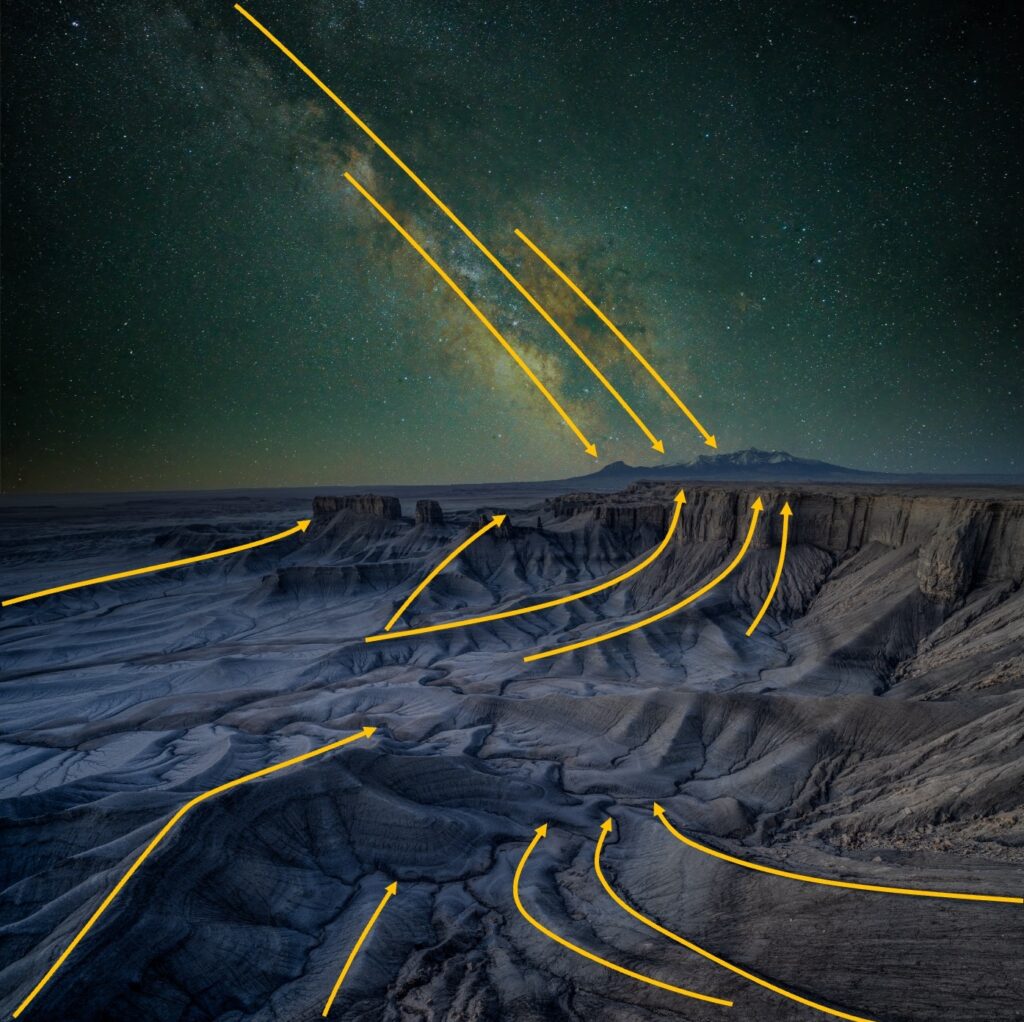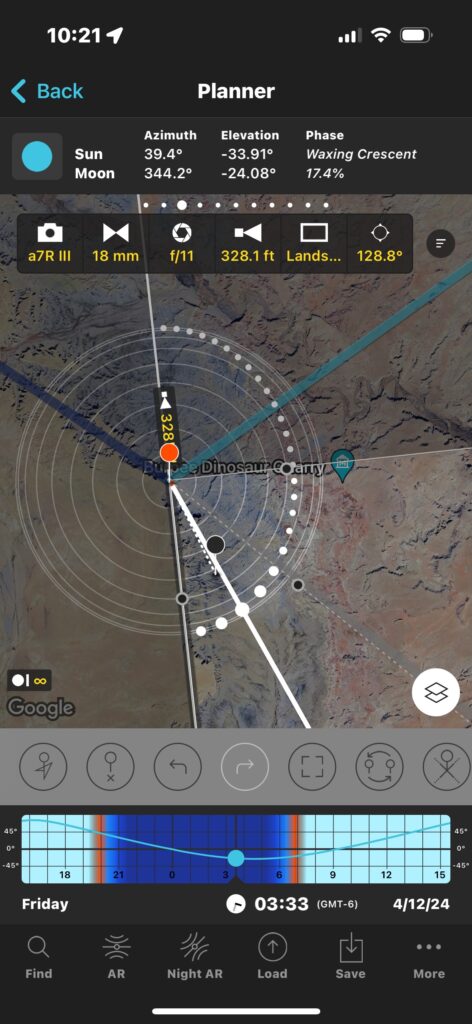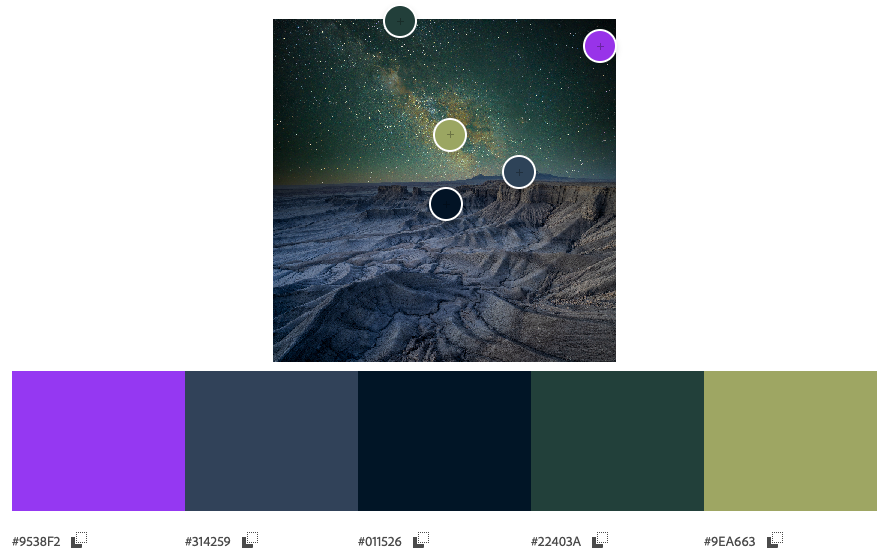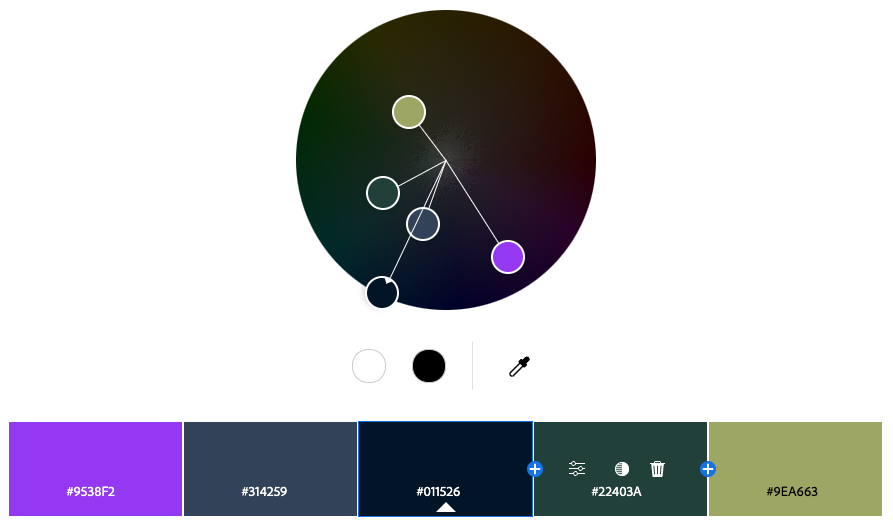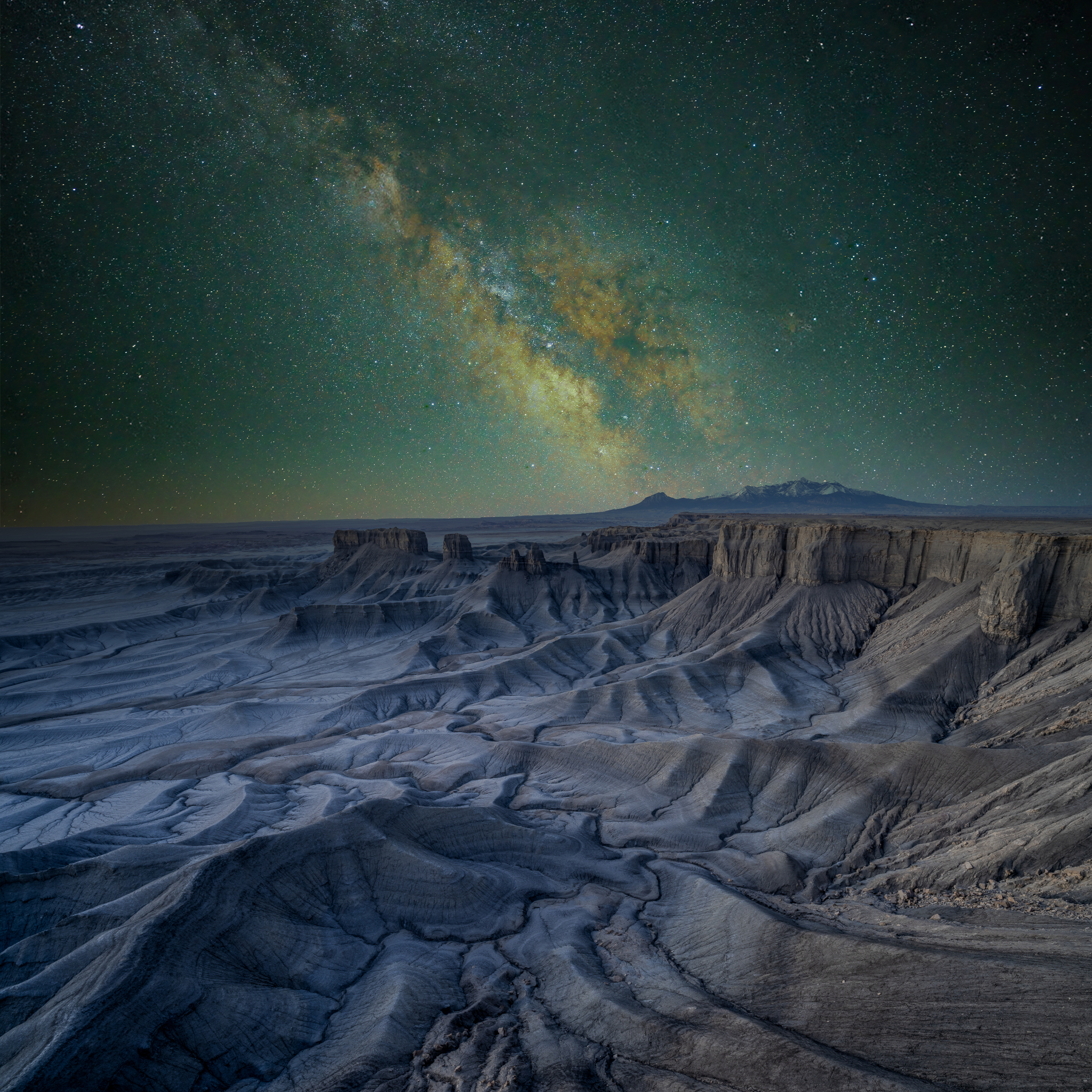This was a location that I longed to visit, but I hadn’t figured out alternate shooting sites nearby to make this trip into a memorable journey. Then a sudden travel requirement to Utah started me thinking about capturing the Milky Way. A photo plan review in PhotoPills indicated that the Milky Way would be descending behind the Henry Mountains that lie to the Southern view of the otherworldly Blue Valley would make this trip to this location memorable. Looking for other nearby sites, I realized that I could also visit Long Dong Silver and the Angel of Death Spire, besides shooting the stately Factory Buttes. So, with a photo plan in mind. The next step was putting into the plan some time on-site to get the right composition and to check for some other compositions that I hadn’t contemplated. The below track recording from Gaia GPS shows the edges at the overlook that I went out to and spent some time framing up possible compositions. The bottom track is the one that I settled on.
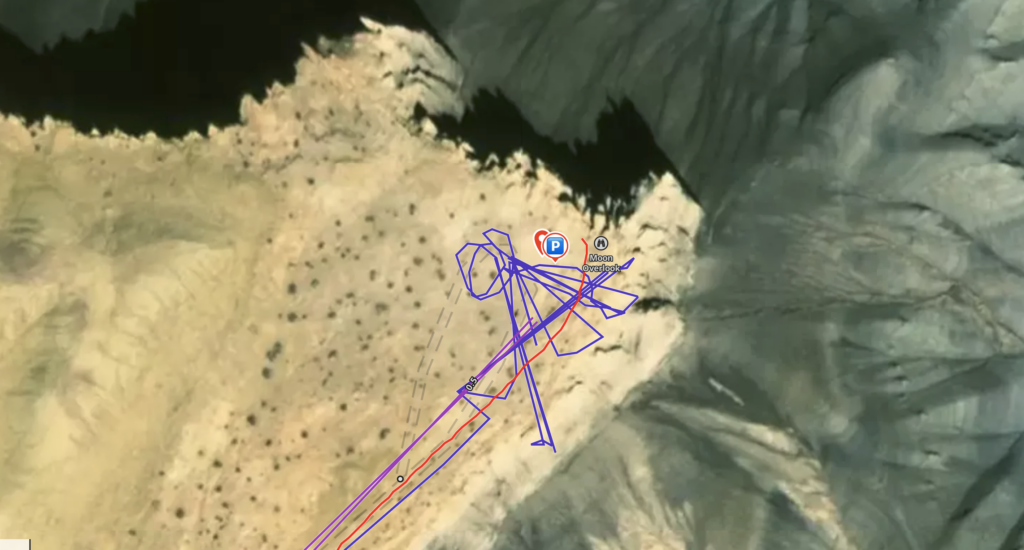
What I didn’t want to do was to take a picture standing out at the pinnacle where most Instagram photos are taken. The below image is that point. With my fear of heights and aging balance, this just didn’t seem to be a point I wanted to walk out to. Especially trying to walk out there in the dark to capture the Milky Way, then return during the blue hour to capture the terrain.
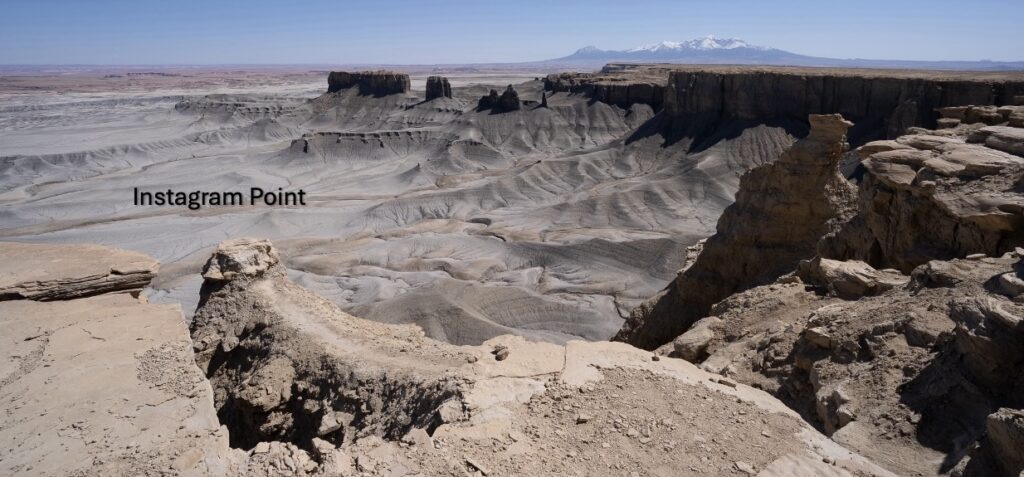
Anyway, with my travel plans getting me to this area around noon, I knew that I would have time to walk around the cliff line of Moon Overlook. To enhance my perspective and orientation of the area I started my research by looking at the content of others’ contributions on the Internet. Of course, one location that we all should use is the Photographer’s Trail Notes, which happened to have an article on this location titled, The Overlook. I researched other Internet postings to gain inspiration and searched Flickr.
So when I hit the road to head to Utah, my trip timetable suggested that I would arrive at this location late in the day, meaning the situation was prime to have time to recon the location for an early morning Milky Way image followed by a morning blue hour photo.
So the next step was to layout the shot in PhotoPills. As luck would have it, I quickly saw that the Milky Way would be descending on the Henry Mountains between 3:30 AM and 4 AM. PhotoPills Night AR was cool, but I failed to take a screenshot. Forgetting that I would want it for this posting. But this wasn’t the only moment that I failed to take a screenshot. I also failed to use the Adobe Capture app to run the Colors module to get the color theme at this proposed shooting location.
This image is a composite of the Milky Way taken using my Zeiss 18mm that I blended with my blue hour shot of the buttes, mountains, and blue valley. The Milky Way shot was taken at 3:40 AM. To get the shot I took 10 dark images and two light images that were blended in Starry Landscape Stacker to build this composite image. Exposure settings for all those images were 1.6 sec at f/2.8 with an ISO 12800. After stacking the images in Starry Landscape Stacker the image was denoised using Topaz DeNoise AI and then cleaned up and toned in both Photoshop and Lightroom. Most of this was to remove a few light trails from non-star objections like planes and satellites.
The landscape shot was taken early during the blue hour in manual mode in landscape orientation using the settings shown in the EXIF table. In post-processing, it was determined to change the frame format to square to provide more of the Milky Way over what was initially planned for in the landscape format.
One of the moments I enjoyed about creating this picture was that I got to take both images using my Zeiss 18mm lens. This is a sharp and easy-to-use lens.
The Milky Way sky was an easy blend into the landscape image using Luminar Neo. I didn’t have to make too many adjustments, mostly since I had left my tripod in place between shots. Because it was on the ledge, I had to weigh it down and trust that the others out there would not take the tripod or disturb my position in my absence. I did get lucky, but I would not recommend my action. 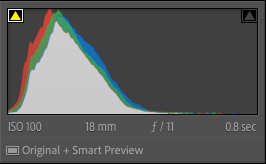
Post-processing of the composite image showed a left-skewed histogram with some minor shadow clipping as indicated in the upper left-hand corner of the white triangle. The left-skewing makes sense with this being a night shot. It also makes sense there is a -0.3 EV exposure bias. However, what is an interesting fact about the image is that the brightness value is 1.95. This brightness value score does help explain why Adobe Colors picked up the light bluish-gray tone in the Milky Way shown below in the color theme along with the Jasmine Purple identified.
When I was looking for an attractive composition while reconning for this picture, the point that I settled on gained my interest mostly because of the leading lines that I outlined in the image below. The other item that attracted my interest was how the Butte ridgeline that protruded to the East created an interesting middle ground to complement the foreground, whose terrain drew your focus to the middle ground and then to the Henry Mountains. The Milky Way also as PhotoPills showed was going to offer leading lines to draw the viewer’s interest to the Henry Mountains. The final part of this composition is the three different types of terrain starting with the moon-like terrain of Blue Valley that transitioned to the Southern Utah red sandstone upper mesa ridgeline to the snow-capped mountainous landscape of the Henry Mountains. I felt this would make a better differential than merely photographing the Blue Valley. What do you think?
